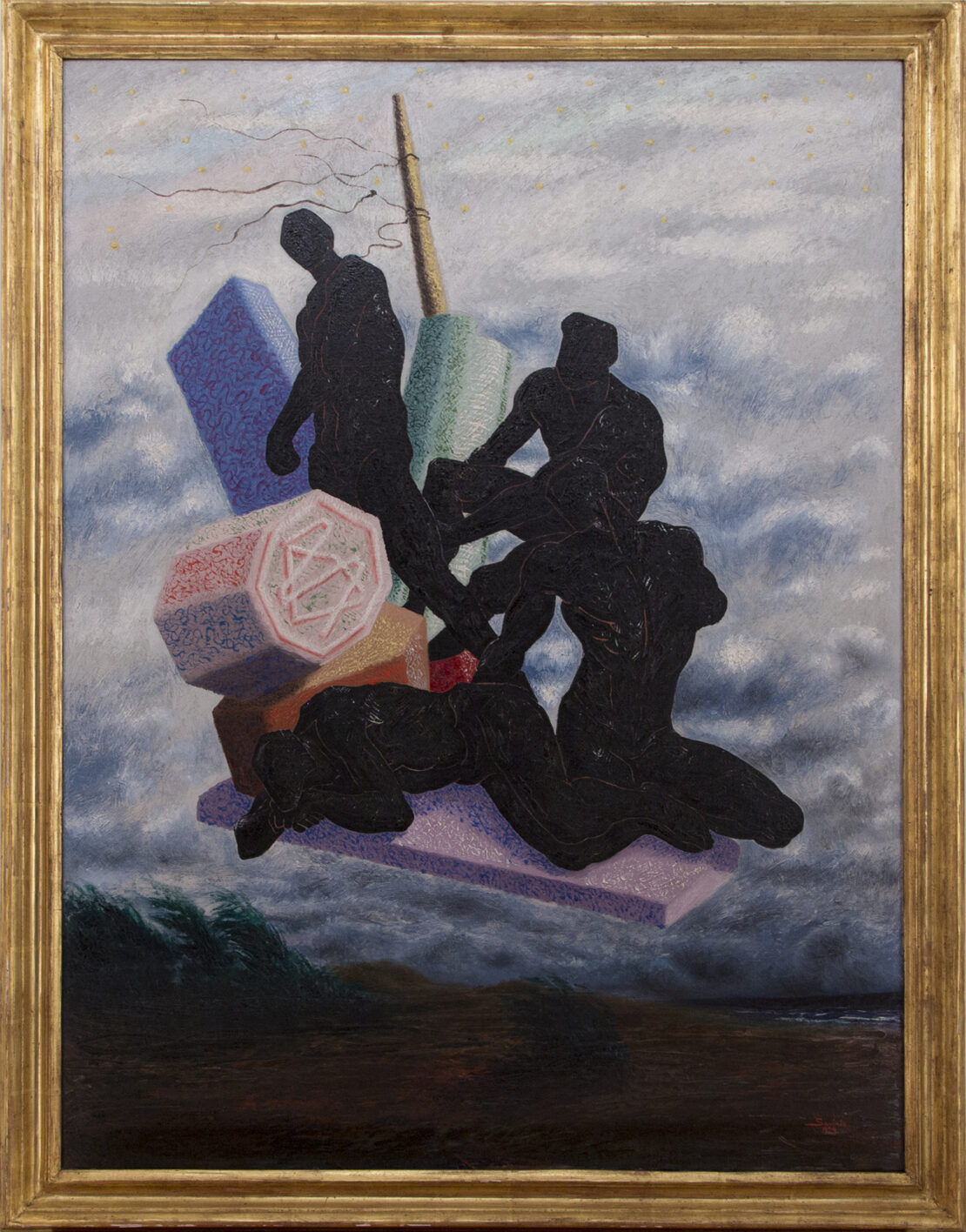La chute des Anges, 1929
Alberto Savinio (Athens 1891 – Rome 1952)
La chute des Anges
oil on canvas
1929
cm 115,5 X 88,5
Inspired directly by the Apocalypse of John, the fall referenced in the title is perfectly interwoven with a shipwreck, the platform-raft, the mast abandoned to the wind, and forms that closely resemble fragments of pillars or columns that weigh down the angels in their fall, most likely an allusion to the collapse of the buildings in the fall of Babylon. In the painter’s vision, the starting point is not dramatic catastrophe but rather fairy tale, an evocation in which the imaginary takes the role of protagonist.
Alberto Savinio, a pseudonym of Andrea Francesco Alberto De Chirico (brother of the famous Giorgio) adopted in 1914, was an Italian writer, painter, playwright and composer, part of the group of Italian artists known as Les Italiens de Paris. Together in the French capital from 1928 to 1933, with Campigli, De Pisis and De Chirico among others, they sought to revive the sculpted, elegantly drawn style of the great Italian Renaissance art.
He learned the piano and composition at the conservatory in his hometown and graduated with honours in 1903.
Upon his father’s passing in 1905, the family stayed for a short time in Venice and in Milan and finally moved to Munich in late 1906. His musical ambitions frustrated, Savinio moved to Paris in 1911, where he made the acquaintance of many of the leading exponents of the artistic zeitgeist of the day, including Pablo Picasso.
In 1915, he returned to Italy together with his brother, Giorgio. They stayed in Florence, where they had existing contacts with the artistic set of Filippo de Pisis and Carlo Carrà.
After the end of the First World War, he was transferred to Milan, and in 1923 he settled in Rome, where he had already published theoretical and narrative texts, primarily in magazines including Valori Plastici and La Ronda. In 1924, he was among the founders of the Compagnia del Teatro dell’Arte, directed by Luigi Pirandello.
At the end of 1933, after several trips to Florence, Turin (where he contributed to the Italian daily newspaper, La Stampa, with a column entitled “Torre di guardia” [“Guard Tower”]) and Milan, he settled permanently in Rome. In the capital, he collaborated on Leo Longanesi’s weekly paper, Omnibus, among other things.
From 1941 onwards, he grew close to Valentino Bompiani, his main publisher.
A committed Europeanist, after the end of the war he pursued work as a culture critic with a column in Corriere della Sera, receiving the Premio Saint-Vincent for journalism in 1949. He also worked as a playwright and director, writing works and plays for the stage, and occasionally even took charge of set and costume design.
